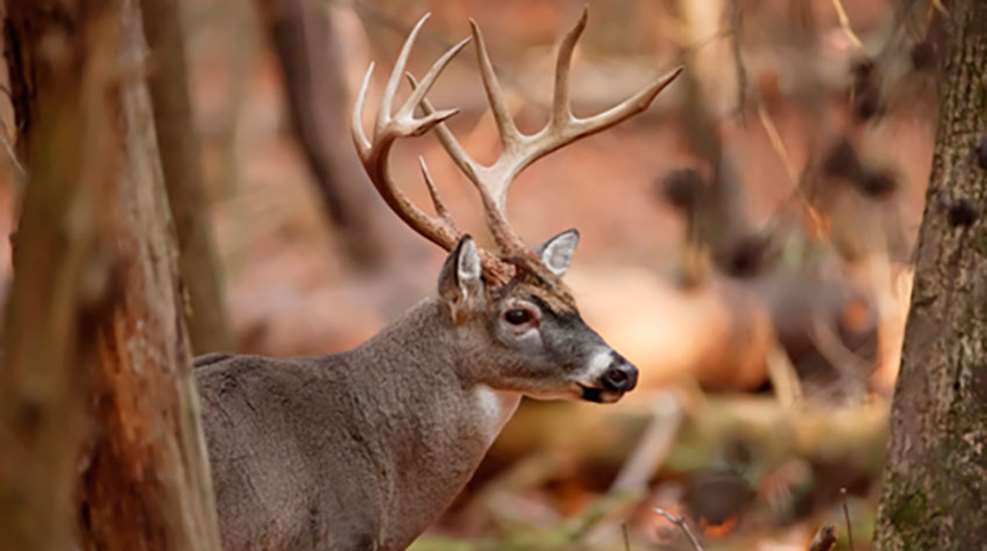
No matter what you see on television, not all game animals drop in their tracks when hit by a bullet or, especially, an arrow. Unfortunately, sooner or later, you are going to find yourself searching for a downed animal. As hunters, we have a responsibility to do our best to recover game quickly and efficiently—that often means blood trailing an animal after the shot. These 10 steps will help you recover game while keeping you and your companions safe.
1. Relax—Gunshot and arrow wounds often kill by blood loss, so take several minutes to gather your thoughts and let the adrenaline wear off before you set off on the trail. Not only will you have a clearer head for the tracking job, but it will give the animal time to expire without triggering its flight instincts. Pushing a wounded animal can result in a far longer tracking job. If you suspect that the shot was poorly placed and the temperature isn’t too high, you may consider quietly leaving the area for several hours to give the animal time to expire (especially for archers). Take this time to analyze the details of the shot, the animal’s position and the direction in which it ran. Don’t panic if it’s getting dark, white light from a flashlight or headlamp can make blood easy to spot. There are also products on the market—such as sprays and blue lights—that claim to make blood trails easier to spot. We put some products to the test, and you can see the results here.
2. Call for help—While you’re waiting, call a friend or two for help. An extra set of eyes can be invaluable, and your helper’s questions can better help you to recall details of the shot.
3. Bring in the hounds—If you have one available to you, there’s no substitute for a good dog when it comes to following an animal’s trail. But don’t wait until you’ve trampled the scent out of the area; call in the dog right off the bat.
4. Make a plan—Wandering the woods hoping to stumble across your deer is not an effective way to recover an animal. Take charge of the recovery and delegate responsibilities to everyone involved. Be sure that your “help” doesn’t wander ahead, unknowingly trampling blood and other helpful sign.
5. Start at the point of impact—Begin your search at the spot where the animal was hit. The immediate area can tell you a great deal about the placement of the shot and the animal’s condition. How much blood is on the ground? Did the bullet exit the animal? Are there hair or bone fragments in the area? What color is the hair? White hair on a whitetail can mean that a shot went low and you may be in for a long night.
6. Think “CSI”—Once you begin to follow the animal’s path you can often determine the location and extent of the wounds by examining the trail. Bright red blood indicates arterial bleeding and is a good sign, while pink frothy blood and chunks of tissue are indicative of a lung hit. Brown or green blood usually means that the animal is “gut shot,” which may be fine if the animal was quartering, but it’s bad news on broadside shots. Blood on tall grass or brush can indicate how high in the body the wound is and whether the animal is bleeding on both sides, which clearly indicates an exit wound. Broken branches, trampled grass and disturbed soil can lead the way in the absence of blood.
7. Mark your trail—Use a bright, colored object (like a blaze orange garment) to indicate the last spot of blood. If you lose the trail, backtrack to the last visible blood spot and walk or crawl in small circles until you pick up the trail again.
8. Think like a deer—If you lose the trail, sit back and think about where the animal may have gone. Usually it’s the thickest brush in the area, but a wounded animal will often head for a water source. If you’re hunting familiar territory, think about places that animals have gone in the past when hit. A few years ago, I was helping a friend track a wounded deer in South Carolina. After hundreds of yards, we lost the blood trail but were able to follow his tracks in the mud. Eventually, those tracks ran out in an open area. We knew that he would not bed down in the open so we borrowed a Labrador retriever and headed for the thickest cover around—sure enough, that’s where we found him dead.
9. Be persistent—Tracking can take time, but don’t give up. I have tracked wounded whitetails for six to eight hours before ultimately finding the animal. Even if your search is unsuccessful, you’ll know that you gave it your best effort if you exhaust every possibility. You owe it to the animal and you owe it to yourself.
10. Be safe, Be legal—It’s not uncommon to “jump” a wounded animal when tracking. Be sure to know the location of every person in your group at all times in case a follow-up shot is necessary. If the animal crosses a property boundary, mark the location and contact the landowner before proceeding.
If you keep calm, use your head and stay persistent, your chances of finding a wounded game animal can increase dramatically.




































